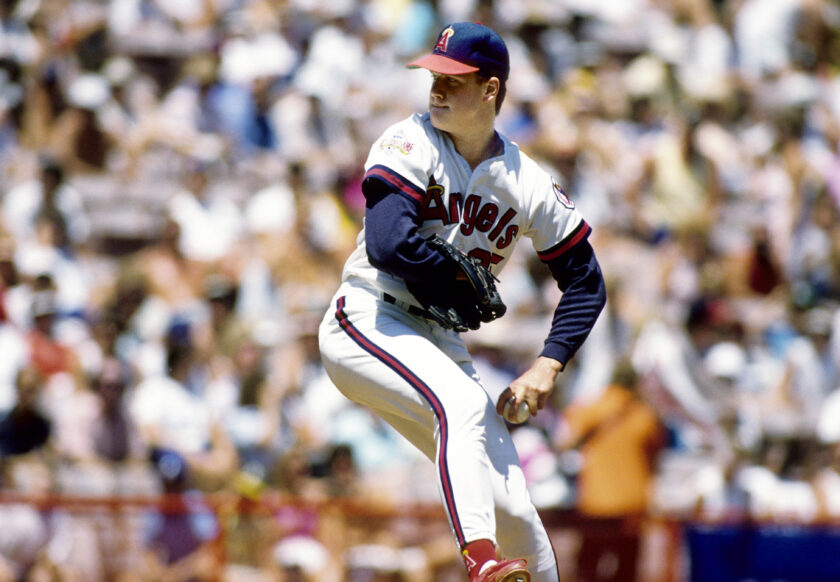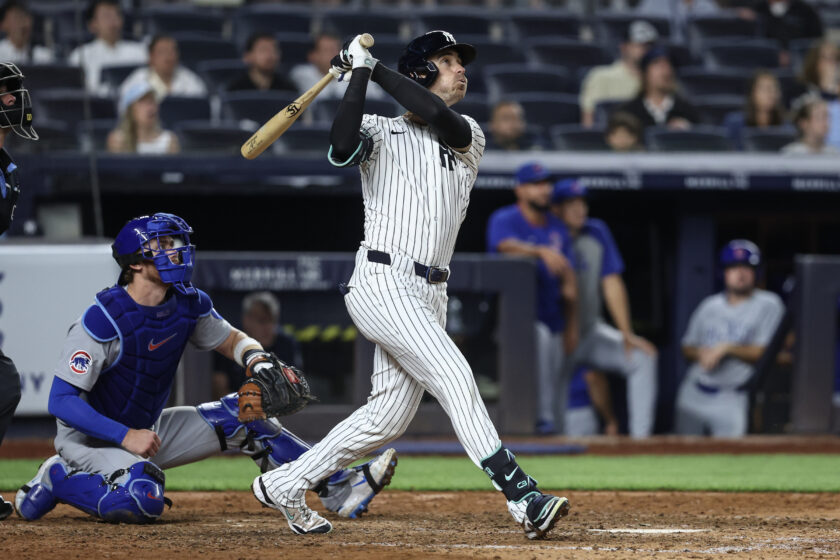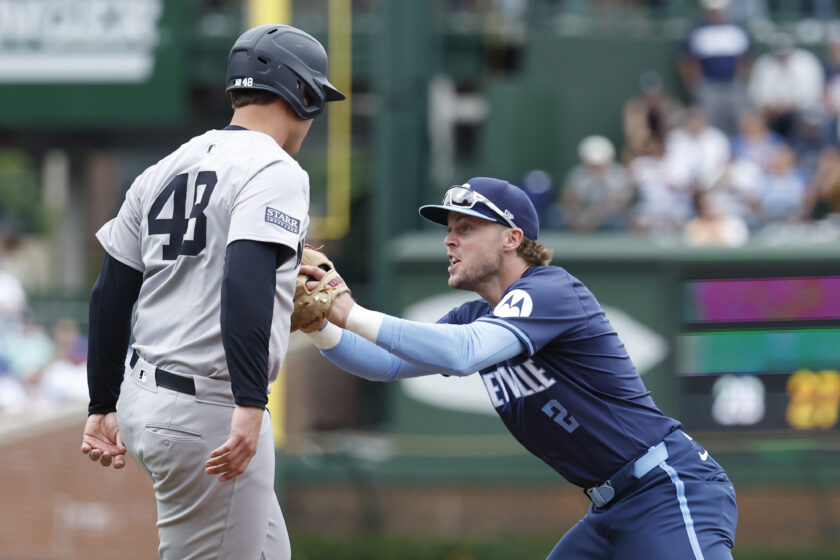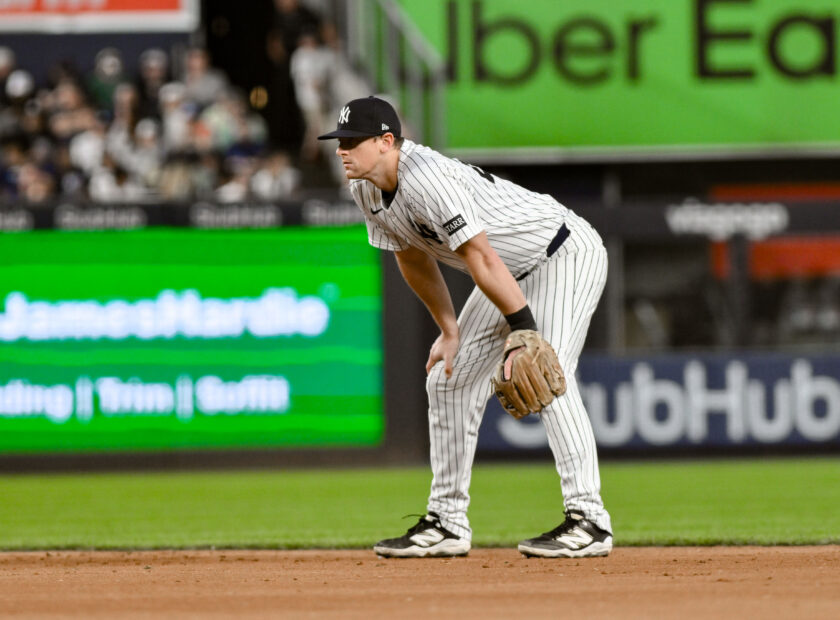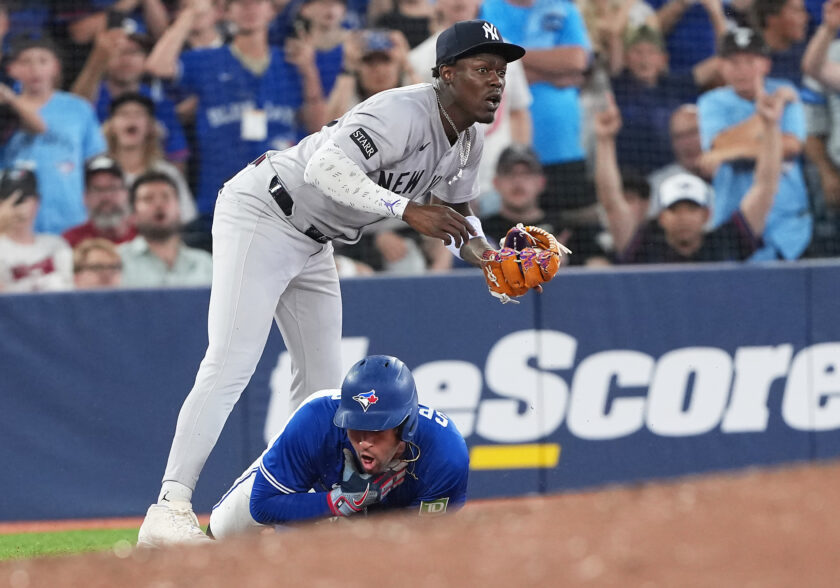Five forgotten left fielders in New York Yankees franchise history
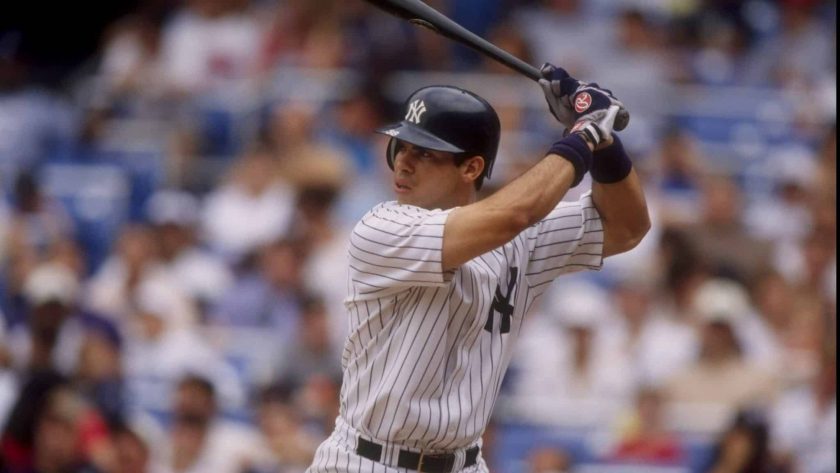
The left field position has always been a weird place for the New York Yankees, but these five forgotten names put it on the map.
[sc name=”josh-benjamin-banner” ]Take a look at the New York Yankees’ retired numbers, and you wouldn’t know they had some solid left fielders in their history. Of the 21 different numbers up in Monument Park, only six belonged to outfielders. Of those six, all made their bones in either right or centerfield.
Granted, Babe Ruth played both corner outfield positions and even some center in his career. But by the time he hit his prime years with the Yankees, he’d shifted to the right side almost exclusively.
In fact, save for more recent examples like Hideki Matsui and Brett Gardner, the Yankees haven’t really ever possessed a left fielder one could call a “franchise icon.” There were impact players, sure, but not necessarily legends in their own right. They wore the pinstripes and won World Series titles, same as some of their teammates. Yet, their individual performances get lost in the shuffle.
Thus, as fans hope for MLB owners and the MLBPA to come to an agreement on restarting the season, let’s look at five forgotten Yankees left fielders.
Honorable mention: Ricky Ledee (Yankees tenure: 1998-2000)

For someone with such a brief Yankees tenure, Ricky Ledee accomplished more in that time than most do in a career. He only appeared in 192 games as a Yankee but hit .258 with 17 home runs and 83 RBIs.
And although Ledee was a subpar fielder in left field, he became a cult hero with his bat. He had a knack for clutch hits, particularly in the playoffs. In Game 1 of the 1998 World Series, his double gave New York an early 2-0 lead. In the 1999 American League Championship Series against the hated Boston Red Sox, his ninth-inning grand slam in Game 4 iced the game and put New York up 3-1 in the series. He hit .295 with 11 RBIs in 16 postseason games before he turned 26 years old.
Unfortunately for Ledee, the honeymoon was short-lived. The Yankees needed consistent power and traded him to the Indians for David Justice in 2000. Ledee would play for five more teams, mostly as a reserve outfielder, before retiring in 2007. He never appeared in the playoffs again.
Still, since his Yankees career arguably ended before it began, the least we can do is acknowledge him in this manner.
No. 5: Mel Hall (Yankees tenure: 1989-1992)

Before we move on, let me make one thing perfectly clear: Mel Hall, accomplishments with the Yankees aside, is a terrible human being. I won’t go into why, but rest assured he has been punished accordingly for his crimes and more details may be read here.
Sadly, as I mentioned before, the Yankees haven’t employed many iconic left fielders, let alone players who starred during short tenures. Hall’s numbers, unfortunately, do stand out when matched up against others. The Yankees acquired him from Cleveland in 1989, and he re-signed in free agency the following year. Hall had established himself as something of a slugger with Cleveland and also the Chicago Cubs, so the deal made sense.
And though Hall was an above-average fielder who sometimes flashed an arm, injuries were an early problem. He only played in 113 games in each of his first two New York seasons. Hall then became healthy and finished his time in the Bronx with a .273 average, 63 home runs, and 265 RBIs.
But playing well wasn’t enough. Hall carried a diva-like reputation and quickly fell out of favor in New York. He mercilessly hazed then-rookie Bernie Williams and clashed with managers. His contract expired, no teams showed interest, and he spent three years in Japan before a brief and forgettable stint with the Giants in 1996.
Hall got what was coming to him, yet still gave the Yankees some swagger in otherwise forgettable years. For that, we begrudgingly recognize him today.
No. 4: Gene Woodling (Yankees tenure: 1949-54)

As far as the dynasties of the Yankees go, Gene Woodling showed up at the right time. In his six years in the Bronx, the Yankees won the World Series five times. Even more amazing is that the team won those five championships all consecutively from 1949-53.
And Woodling was smack dab in the middle of the sunset on Joe DiMaggio‘s career and the subsequent dawn of Mickey Mantle‘s legend. New York purchased his contract from the Pittsburgh Pirates after the 1948 season, and the rest is history. Woodling was put in left field and became a reliable lefty contact bat. He hit .285 during his time with the Yanks and led the American League in on-base percentage (OBP) in 1953.
But where Woodling really thrived was in the field. He was a superior defensive outfielder compared to his contemporaries. In his 17-year career, he committed just 35 errors. Woodling was also a force in the postseason, batting .318 in the World Series for his career.
He was traded to the Orioles for Bob Turley in 1954 and won another World Series ring while on Baltimore’s coaching staff in 1966. Still, for all his accomplishments during his playing days, Woodling will always be best remembered as a Yankee.
No. 3: Bob Meusel (Yankees tenure: 1920-1929)
When people think of the early Yankees teams, the Murderers’ Row squad of 1927 often comes to mind. Between Babe Ruth’s 60 home runs, the continuing rise of Lou Gehrig, and elite pitching, it’s easy to fall in love with this team. Nonetheless, Bob Meusel hit .337 with 103 RBIs that year, and yet his name falls through the cracks.
In fact, Meusel did more for the Yankees than one may realize. He hit .311 in his 10 Bronx seasons and led the league with 33 homers and 134 RBIs in 1925. Though never an elite defensive outfielder, Meusel more than made up for it with his bat.
Meusel wound up winning three World Series in New York but avoided the spotlight occupied by Ruth and Gehrig. The Yankees sold his contract to the Cincinnati Reds ahead of the 1930 season, and Meusel played one year there before finishing his career in the minors. His baseball career ended quietly, probably how Meusel himself would’ve wanted it.
No. 2: Roy White (Yankees tenure: 1965-1979)

For someone who spent his entire major-league career with the Yankees, Roy White doesn’t receive nearly enough attention. Based on his numbers, it’s easy to see why. White never hit above .300 as a full-time player and only once reached the 20-home run threshold. Put most of White’s Yankees tenure next to Elwood Blues’ signature order of dry toast, and nine out of ten fans probably wouldn’t tell the difference.
Jokes aside, though, White made his mark on the Yankees in that he proved to be significantly durable. He appeared in more than 140 games eight times in his career and his switch-hitting frustrated pitchers en route to a .271 lifetime batting average.
White was also a two-time All-Star who twice played a full 162-game season and led the American League in runs scored in 1976. He hit .278 in the playoffs and helped the Yankees win back-to-back World Series in 1977 and 1978. White also proved to be a strong defensive left fielder and had good enough speed to swipe 233 bases in his career. In retirement, he twice returned to New York to coach.
His numbers aren’t flashy, but White did more in pinstripes than we realize and should be recognized accordingly.
No. 1: Tom Tresh (Yankees tenure: 1961-1969)
Oh, how quickly Yankees fans forget Tom Tresh. It’s really almost criminal. The Michigan native had a nine-game cup of coffee in 1961 before arriving full force the following year. Then the starting shortstop, Tresh hit .286 with 20 home runs and 93 RBIs and was named American League Rookie of the Year. New York additionally won the World Series that year, which fueled excitement.
Tresh then became a full-time outfielder. Though he played well and hit 140 home runs during his tenure in the Bronx, the team’s time in the sun was over. New York lost the World Series in 1963 and 1964 before regressing into mediocrity.
Sadly, Tresh’s bat soon followed. The switch-hitting Michigander hit .271 in the first half of his career, but just .215 for the rest of his career. The Yankees traded him to his hometown Detroit Tigers in 1969 and he was out of baseball the following year.
And Tresh’s brief career was no fault of his own. His decline at the plate can be attributed to his only protection in the lineup being Joe Pepitone and an aging, injured Mantle. Despite that, Tresh was a three-time All-Star and won a Gold Glove in 1965. He played in three World Series and hit .277 with four home runs and 13 RBIs in the postseason.
Had he possessed a proper team around him in his prime, who knows how good Tresh could’ve been?
Josh Benjamin has been a staff writer at ESNY since 2018. He has had opinions about everything, especially the Yankees and Knicks. He co-hosts the “Bleacher Creatures” podcast and is always looking for new pieces of sports history to uncover, usually with a Yankee Tavern chicken parm sub in hand.

